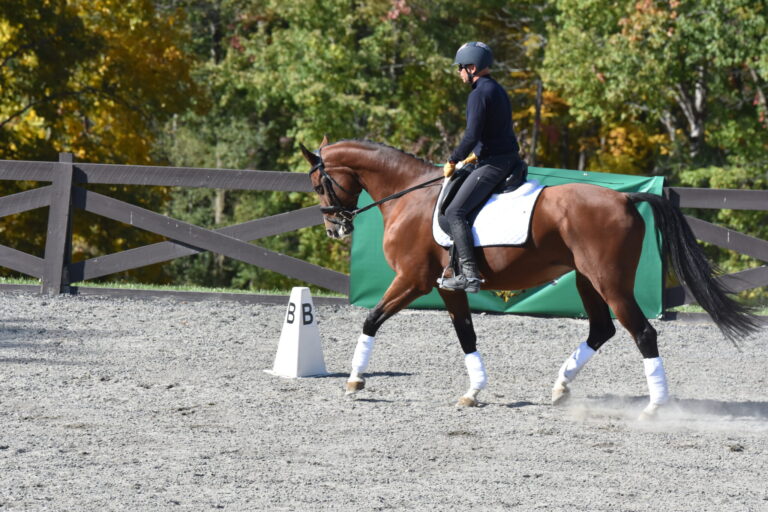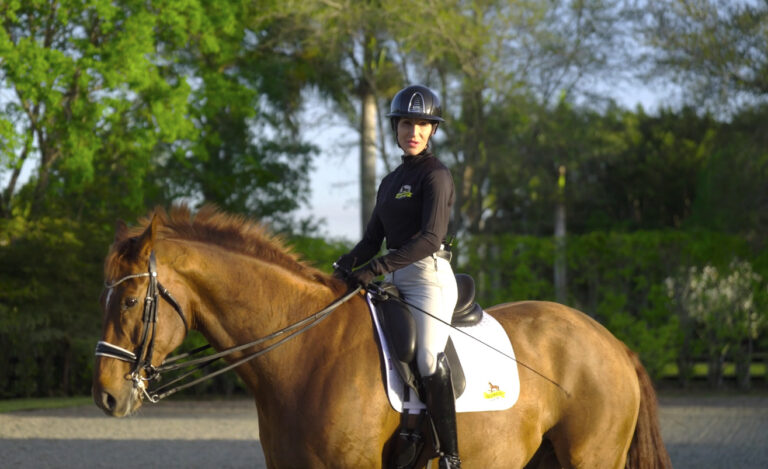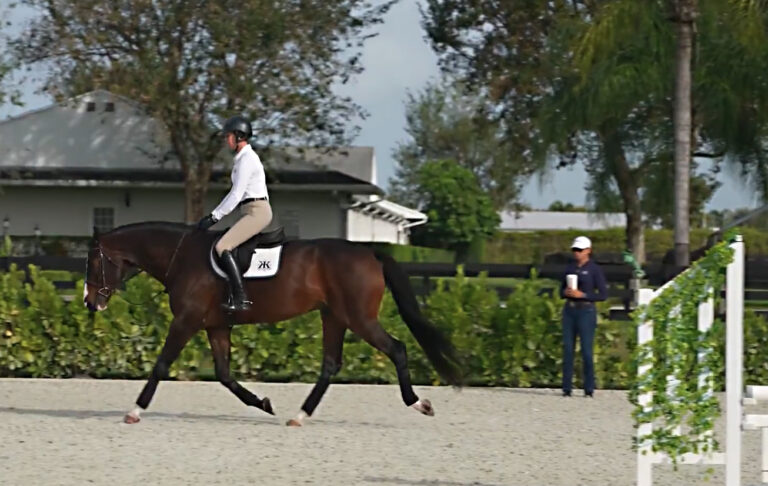In jumpers, the rider only has about half an hour before the class begins to get the course down. Riders are encouraged to “walk” the course. In dressage we have as much time as we need to memorize the tests and we don’t walk them just before the class begins. But that doesn’t mean that dressage riders can’t walk our tests. At a show, I find a nice quiet spot away from others and mentally mark off an area into the arena and walk my test saying the movements aloud as I go. Sometimes, without even thinking about it, I find myself trotting and bending around my imaginary arena. It really helps. At one show–several other riders noticed me off in a corner of the barn “walking my course”–they came over to see what I was doing. When I explained–they joined in, and we all judged as each took a turn to great laughs.
Rich Devin
Las Vegas, Nev.

My best tip for memorizing dressage tests is mostly good precise practice just like the famous quote, “Practice does not make perfect. Only perfect practice makes perfect” by Vince Lombardi. I do a lot of dressage tests, and I’m a good memorizer, but the people who aren’t should go over the test very thoroughly. Then at an open place like a rug, pretend that you are the horse and the whole rug is the dressage arena. Set up the rug with the right letters in the right places, and do the test like the horse. After you think that you can do the dressage test then go get on your horse and make the dressage arena and do the test. Then when you are so confident that you got this test down you can rest on it or just keep practicing. At the final event then you can go over the test at a practice arena or just draw sketches of your test. Then you will be ready to perform your test.
Mia Tumler
Park City, Utah
First, read the test and draw a dressage arena with letters on it. Draw your dressage test a few times then see if you can do it without the written test. If you have got it ride your test once or twice on horseback, but not too many times or your horse will start to anticipate the next movement. Last, on the day of your show before you go in the ring read the written test to check if you really have it and ride!
Grace Sauter
Lynden, Wash.
When I look at a dressage test for the first time I simply read over it a couple times and get a feel for what movements and other questions the judge will be asking of my horse and me. Once I know what movements will be required of me in the test, then I can figure out how they all link together. Next I look up a diagram of a dressage arena, or draw one myself, and read each part of the test aloud as I run my finger over the diagram and imagine each movement separately in my head. Once I have ”ridden” my finger through the test 2-3 times I put everything away and forget about it for a couple hours. Then when I have quiet time to sit down and mentally put myself on my horse, I trace the test a couple more times saying each part aloud and visualizing how easily I want everything to flow. I find that the best time to do this is right before I get ready for bed. The reason is because when you sleep, your brain analyzes everything you did that day and if you go to sleep with the test fresh on your mind, it will be a little more glued in your brain the next morning and hopefully stored clearer for future reference. Right when I wake up the next morning, I trace the test and say it aloud a couple more times, usually finding that I don’t need to read the test word-for-word like I did the first time. I do this for a couple days until I “have it.” Sometimes other methods I use to make sure I have it down are walking the test on foot in an empty dressage arena and telling someone else the test while they read it themselves and check that I’m reciting it correctly. I think the fewer times you “ride” the test on your horse, the better becuase you don’t want your horse to have it memorized just as much as you do!
Audra Early
Via email
My family lives in a renovated 1970s charismatic church that “blessed” us with many large open spaces and rooms. One large room that survived the remodel was the church nursery. The large rectangular room has served to guide all members of our family in various sports pursuits. Now that my 11-year-old daughter is beginning her first show season in dressage, it was easy to transform the room into a dressage arena. With the help of letters printed on large Post-it notes placed on the walls and floor, my daughter walks, trots and canters her pretend pony as I call out the test. We take turns and each of us have our tests memorized and “critiqued” within minutes. The benefit of kinesthetically moving our bodies through the test really makes the memorization stick.
Staci Collins
Boulder, Colo.
To read more great tips, see the Rider to Rider column in the September 2009 issue of Practical Horseman magazine. Have one of your own to share? Post it in the Practical Horseman forum.











